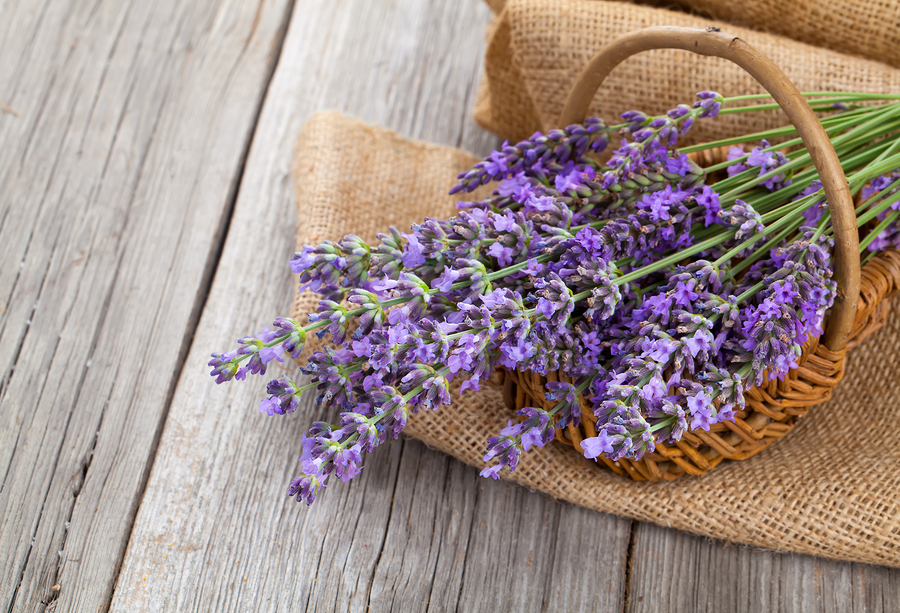You walk into a massage therapy office needing relief and balance. You breathe in a spirit-lifting scent and then a remarkable calm washes over you. Most likely you’ve just experienced one of the amazing benefits of lavender.
This richly scented, deep purple flower is native to the mountainous zones of the Mediterranean, but widely available throughout the U.S., Europe and Australia. Over 2,500 years ago the ancient Egyptians used lavender in rituals, including the mummification process. In ancient Greece and Rome, the flowers and oils were sold at premium prices for use in soaps, perfumes and natural remedies.
Today, lavender essential oil is used in aromatherapy to help balance and soothe mental and emotional stress. While, lavender initially feels “reviving” to the senses, within moments it has a calming and restorative effect. In botanical medicine, lavender is used in treatment for anxiety, insomnia, fatigue, tension headache, and mild depression. For individuals with ADHD or Autism Spectrum Disorders, lavender is safe to use as part of a relaxation routine. It’s one of the few essential oils that may be applied directly to the skin undiluted or in combination with other oils for massage and bathing.
Lavender has a wide range of “floral notes” that can be achieved depending on the intensity of the concentration. It’s available as a tincture, infusion, extract and, as noted, an essential oil alone or in combination with other herbs used for relaxation. Dried lavender and its derivatives are used in bath salts, sachets, eye pillows, and potpourris. Lavender, in herb form, may also be used in herbal beverages and teas.
References
- Mars, B. & Fiedler, C., The Home Reference to Holistic Health and Healing. AppendixA: Lavender. (2015) 191. Fair Winds Press: Boston, MA.
- Curtis, S. Essential Oils. (2014) 82-83. Winter Press: London.
- University of Maryland Medical Center Complementary and Alternative Medicine Guide Onlien. “Lavender.” Accessed April 7, 2017: http://umm.edu/health/medical/altmed/herb/lavender
- Ernst E., The Desktop Guide to Complementary and Alternative Medicine: An Evidence-Based Approach. (2001) 130-132. Edinburgh: Mosby.
- Howard S, Hughes BM. “Expectancies, not aroma, explain impact of lavender aromatherapy on psychophysiological indices of relaxation in young healthy women. “Br J Health Psychol. (2008 Nov 13. Pt 4):603-17.
- Williams TI. “Evaluating effects of aromatherapy massage on sleep in children with autism: a pilot study.” Evid Based Complement Alternat Med. 2006;3(3):373-7. https://www.ncbi.nlm.nih.gov/pubmed/16951722
- Koulivand, Peir Hossein, Maryam Khaleghi Ghadiri, and Ali Gorji. “Lavender and the Nervous System.” Evidence-based Complementary and Alternative Medicine : eCAM 2013 (2013): 681304. PMC. Accessed: 7 Apr. 2017: https://www.ncbi.nlm.nih.gov/pmc/articles/PMC3612440/
- Levy, Susan E., and Susan L. Hyman. “‘Complementary and Alternative Medicine Treatments for Children with Autism Spectrum Disorders.'” Child and adolescent psychiatric clinics of North America 17.4 (2008): 803–ix. Accessed 7 Apr. 2017: https://www.ncbi.nlm.nih.gov/pmc/articles/PMC2597185/

